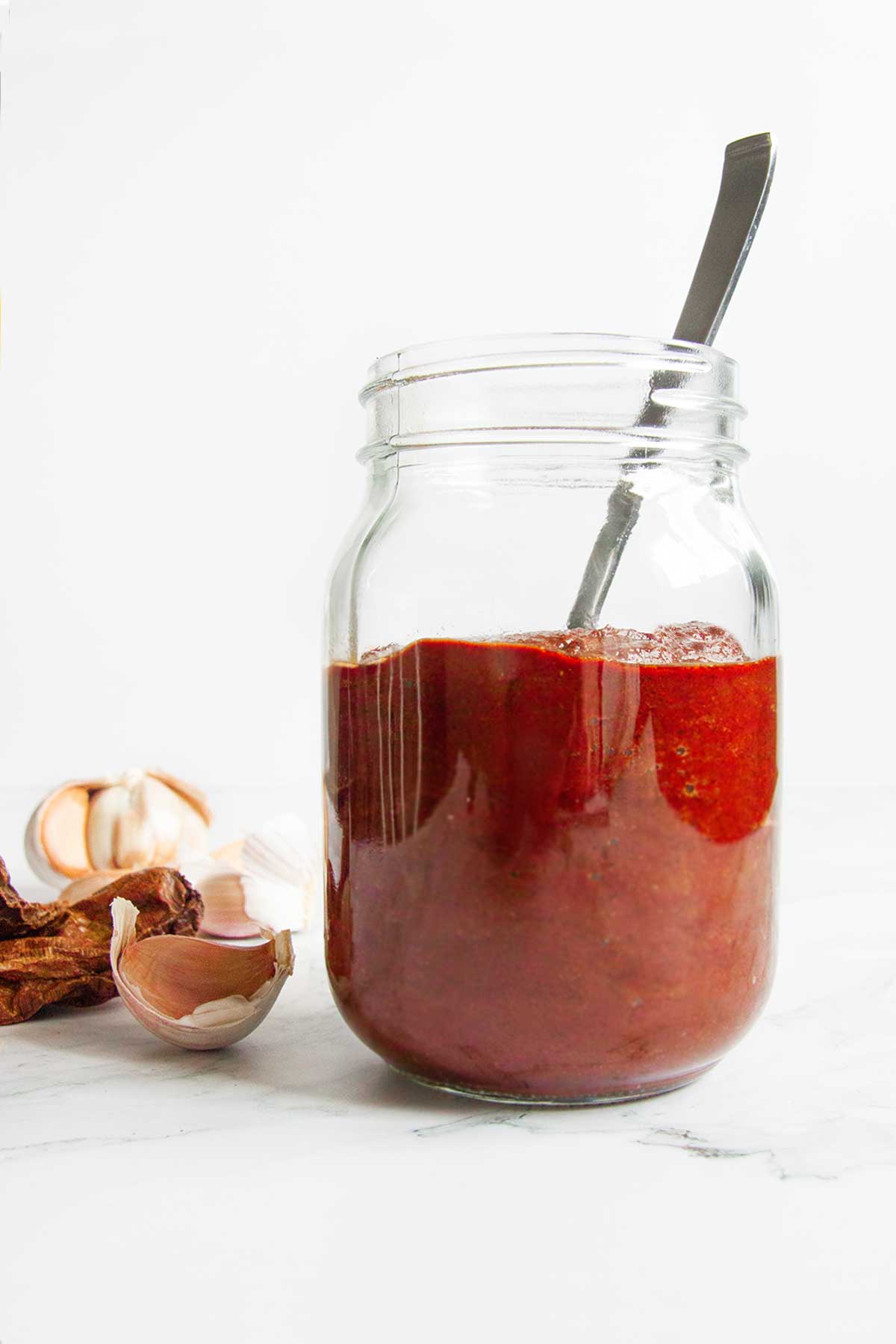
Adobo sauce is an authentic, earthy, rich, velvety, and not particularly tongue-tingling Mexican sauce made from dried chile peppers. It’s typically made from dried ancho chile peppers, but our recipe also offers an easier riff that relies on pure ancho powder rather than dried ancho chiles in pepper form. How brilliant is that?!

Why Our Testers Loved This
The testers call this versatile condiment “quick, easy, and delicious.” They loved the shortcut of using ground chile powder, which allows the sauce to come together quickly, with no soaking time required.
They were also delighted with the sauce’s many uses. They tried using it as a dip, marinade, and flavor booster for tofu, rice, and vegetables.
Notes on ingredients
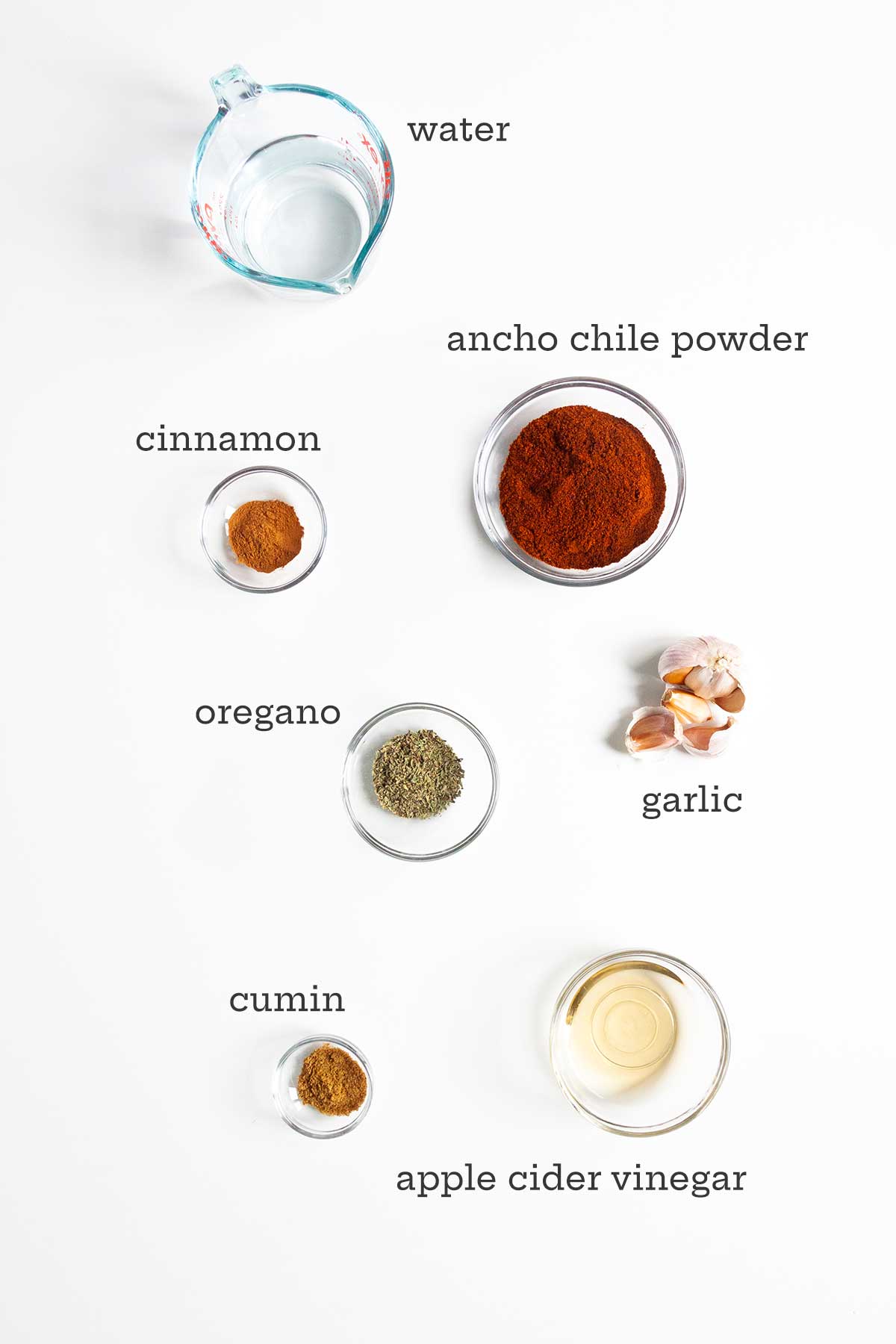
- Ancho chile powder–This is ground, dried ancho chiles and can be found at specialty spice markets, online, and some bulk stores. You can also make your own by toasting whole chiles, then processing them until finely ground. See the FAQ below for more details.
- Apple cider vinegar–This gives the sauce its tang and shouldn’t be omitted. You can substitute plain white vinegar if necessary.
Step-by-step instructions
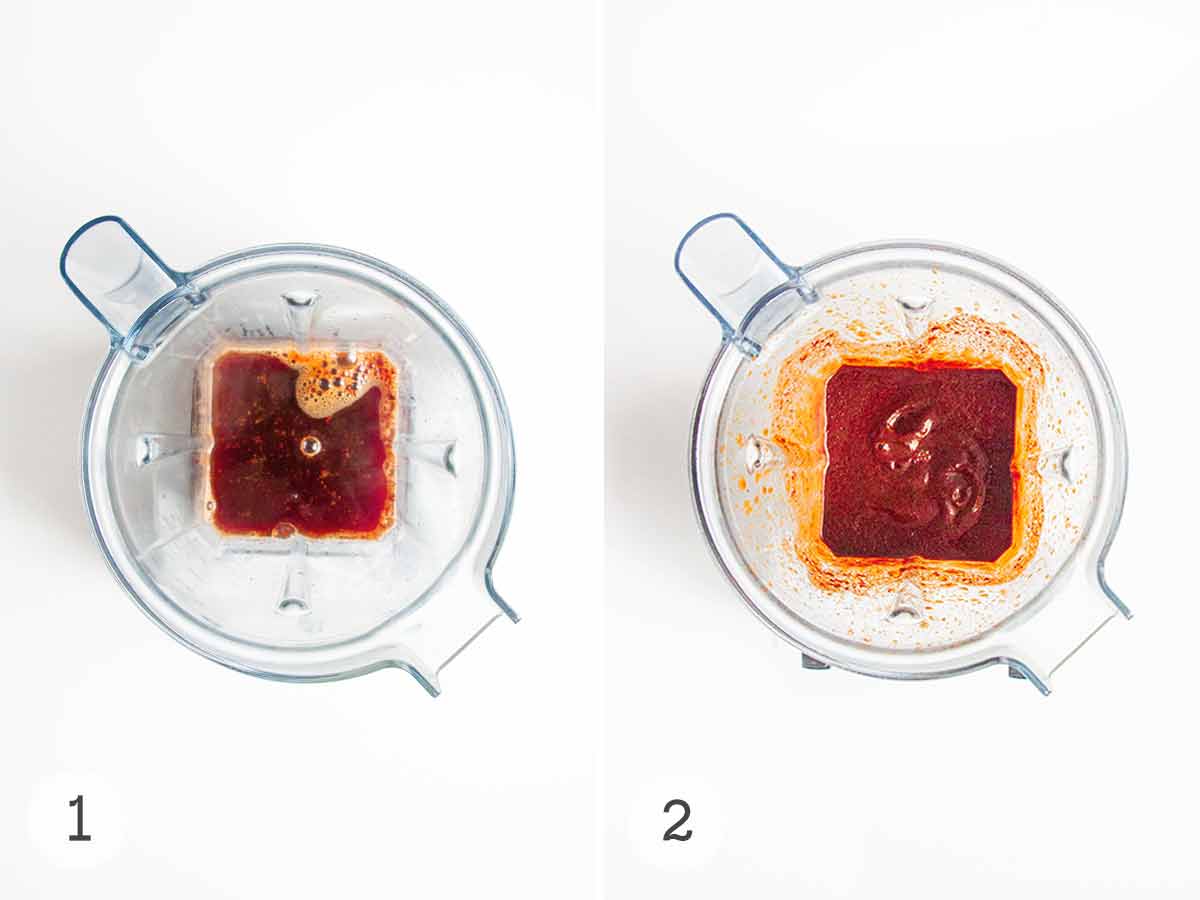
- Scoop the chile powder into a blender. In a kettle or small saucepan, bring the water to a boil. Pour the boiling water over the chile powder.
- Blitz until smooth.
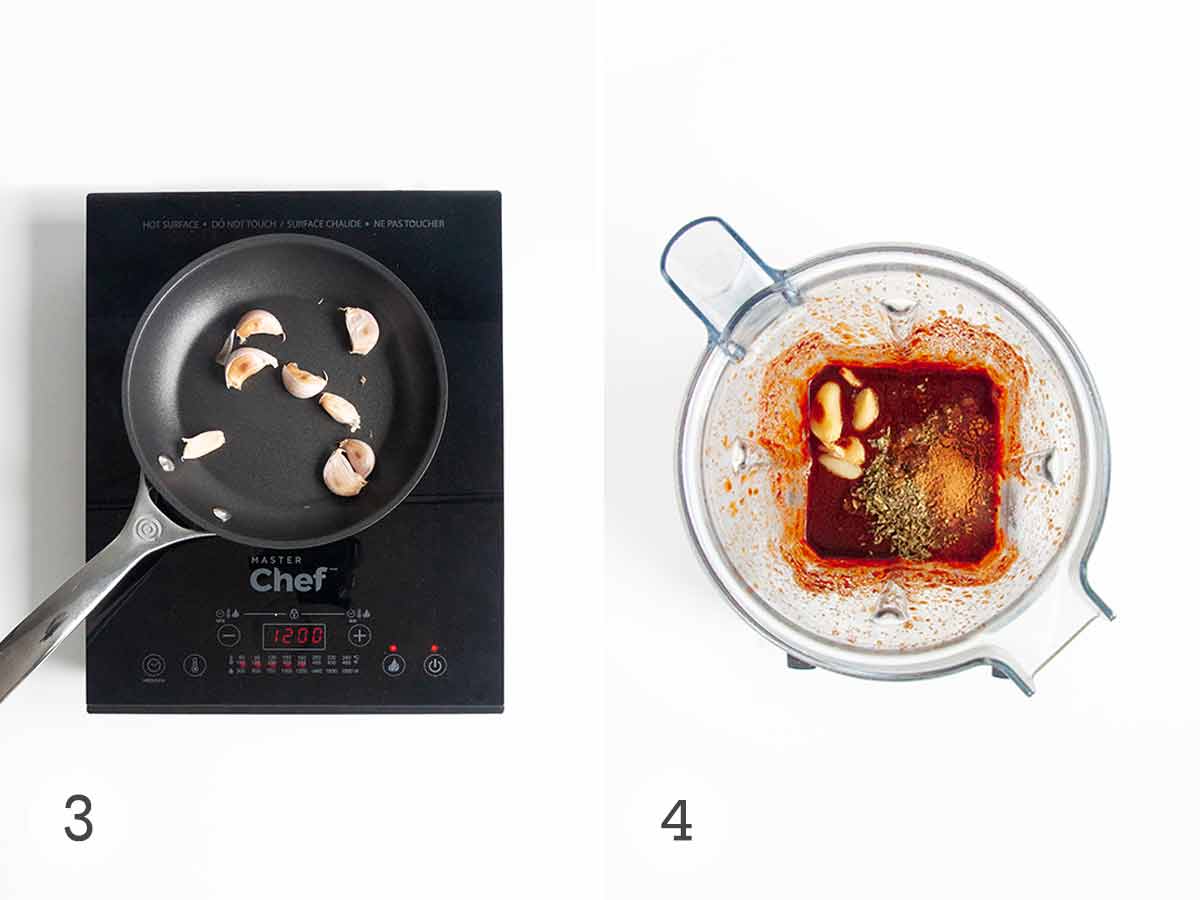
- Toast the garlic in its skins in a small skillet over medium-high heat until blackened in spots. Let cool, then remove the skins.
- Add the garlic, spices, vinegar, and salt to the blender and blitz until very smooth. Add more water if needed.
- Transfer the sauce to a clean, lidded jar. Store in the refrigerator.
Common Questions
Adobo sauce is a traditional Mexican condiment made from dried chile powder, vinegar, garlic, and spices with a smoky and slightly sweet flavor. It’s most commonly used for pouring over chipotle peppers.
It’s frequently used, often with chipotle chiles, for creating sauces, rubs, and marinades, and it also adds depth and smoky flavor to soups, stews, and meat dishes.
We’re all probably most familiar with adobo sauce as the sweetly earthy sauce that bathes canned chipotle peppers. But it boasts far, far more uses than that…
– Use it as a marinade for fish, scallops, shrimp, chicken, or pork destined for the grill or skillet.
– Stir a little into rice as it cooks.
– Mix with ground pork for a quick substitute for Mexican chorizo.
– Add to pretty much any brothy soup for depth and interest.
– Season sautéed greens or potatoes.
– Add it to a simple vinaigrette to drizzle over a salad.
– Dribble over your zucchini and eggs.
Definitely. If you prefer to work with whole dried ancho chiles rather than ancho powder, simply remove the stems and seeds from 4 medium dried ancho chiles and toast them in a dry skillet over medium heat for a minute or so, until very aromatic.
Move them to a plate to cool, then tear the chiles into small pieces, scoop them into a blender, and proceed with the recipe, blending the dried chiles instead of the chile powder with the boiling water as directed and then adding the remaining ingredients.
Pro tips & troubleshooting
- The sauce can be stored in an airtight container in the fridge for up to 2 months or frozen for up to 6 months. If you’re freezing the sauce, divvy it into smaller portions so that you can thaw only what you need for a recipe. Ice cube trays work well for this.
- This recipe is suitable for vegan, gluten-free, and dairy-free diets.
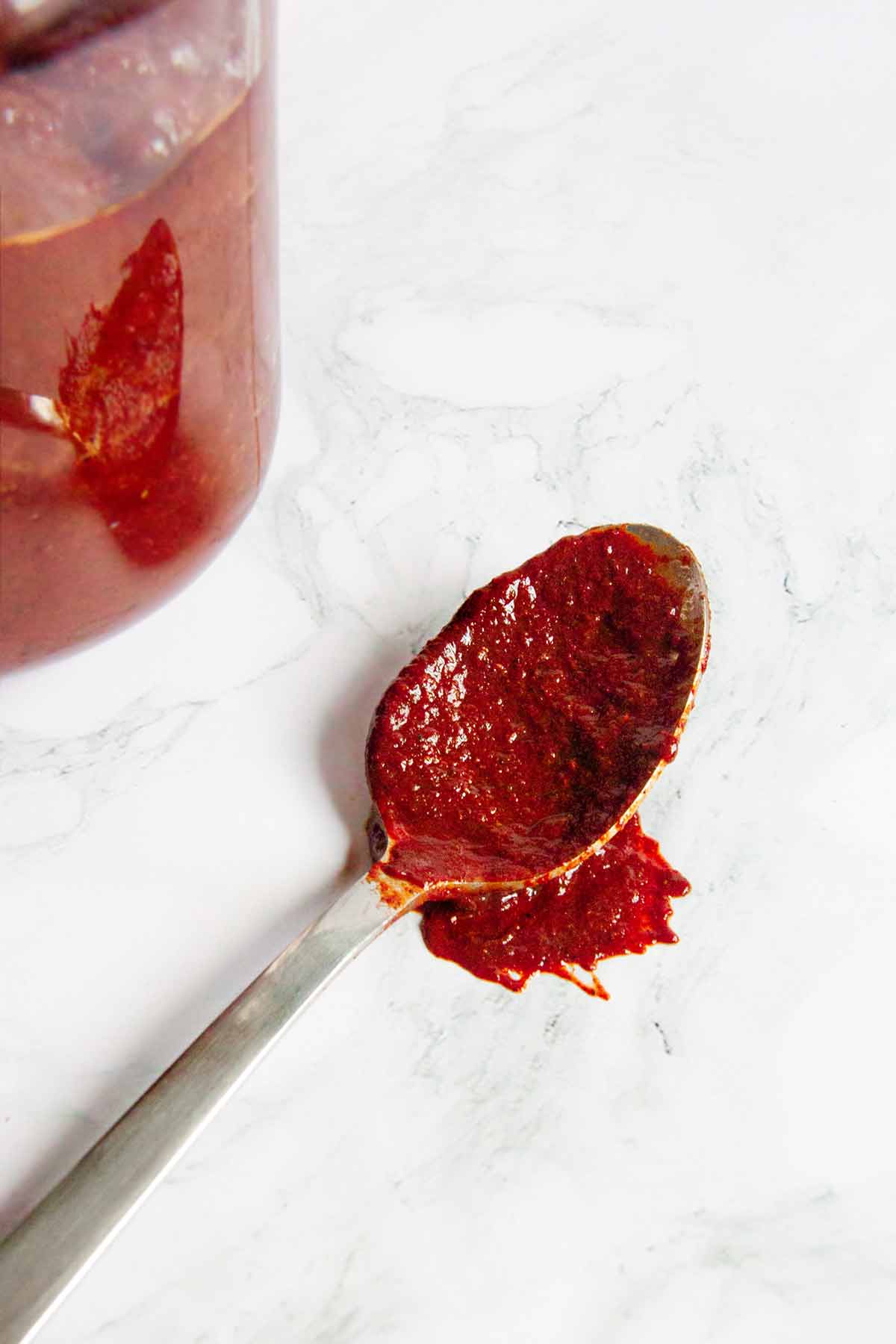
Want to save this?
Write a review
If you make this recipe, or any dish on LC, consider leaving a review, a star rating, and your best photo in the comments below. I love hearing from you.–David
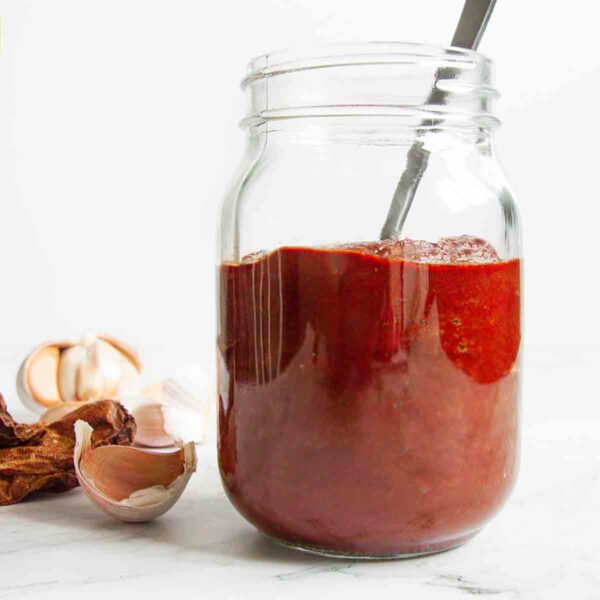
Adobo Sauce
Ingredients
- Scant 1/2 cup (2 oz) ancho chile powder*
- 1 1/4 cups water
- 8 garlic cloves, peeled
- 1/2 teaspoon ground cinnamon, preferably Mexican canela
- 1/4 teaspoon ground black pepper
- 1/8 teaspoon ground cumin
- 1 teaspoon dried oregano, preferably Mexican
- 3 tablespoons apple cider vinegar
- 1 1/2 teaspoons kosher salt
Instructions
- Scoop the chile powder into a blender or small food processor. In a medium saucepan, bring the water to a boil. Pour the hot water over the chile powder, loosely cover the blender or secure the top of the processor, and pulse to create a smooth slurry. Let cool.
- If you prefer a straightforward and quick adobo, toss the peeled garlic cloves in a microwavable bowl, add enough water to cover, and microwave on 100% for 1 minute. Drain. If you prefer a sweeter, toastier flavor to your adobo, toss the garlic cloves, still in their papery skins, in a dry skillet and place over medium heat, turning them regularly until they turn soft and blotchy black, about 15 minutes. Let cool and then remove and discard the papery skins.
- Toss the garlic in the blender along with the cinnamon, pepper, cumin, oregano, vinegar, and salt and process until a smooth purée forms. If necessary, stir in some water, a splash at a time, until the adobo is the consistency of barbecue sauce.
- Scoop the adobo into a pint jar, screw on the lid, and store in the refrigerator for up to a couple months.
Notes
- Storage–The sauce can be stored in an airtight container in the fridge for up to 2 months or frozen for up to 6 months. If you’re freezing the sauce, divvy it into smaller portions so that you can thaw only what you need for a recipe. Ice cube trays work well for this.
- Dietary–This recipe is suitable for vegan, gluten-free, and dairy-free diets.

Explore More with AI
Nutrition
Nutrition information is automatically calculated, so should only be used as an approximation.
Recipe Testers’ Reviews
This homemade adobo sauce recipe is exactly as advertised. Quick, easy, and delicious.
I don’t really think that dried anchos are mysterious or hard to find (in fact, they’re probably easier to find than ground ancho powder), but using the ground chiles really does shorten the prep time as there’s no soaking to deal with. And the boiling water technique works well to produce a smooth sauce. The adobo sauce makes a great marinade.
Vegetarians take note: you can freeze some tofu and then thaw it and pulse in a food processor until coarsely ground. Sauté the ground tofu with some of this adobo, and you will have a vegetarian chorizo that tastes much, much better than the soy-based chorizos you can buy in the store.
I swear that condiments speak to me. My fridge is proof. I’ve never found an unusual condiment I could resist.
One taste of this adobo sauce, and you’ll hear it, too. It’s shouting to be used with tomatoes in shakshuka or ranchero sauce, begging to be mopped over pork chops or flank steak, talking its way into your baked beans, even cozying up to your squirt of mayo on your sandwich. Think I’m crazy? Take a taste. This adobo sauce recipe is easier than most—it’s largely a dump-and-blend situation.
We added about 3 tablespoons of the sauce to a pot of rice pilaf with shrimp and were rewarded with a rich garlic and chile flavor without any heat.
This quick red chile adobo sauce was easy to prepare and could be used for quite a few things.
I made it into a vinaigrette and served it over salad. I added it to plain Greek yogurt and used it as a quick veggie dip. I marinated some pork chops in it with good results, and I also used some to spice up a pot of chili.
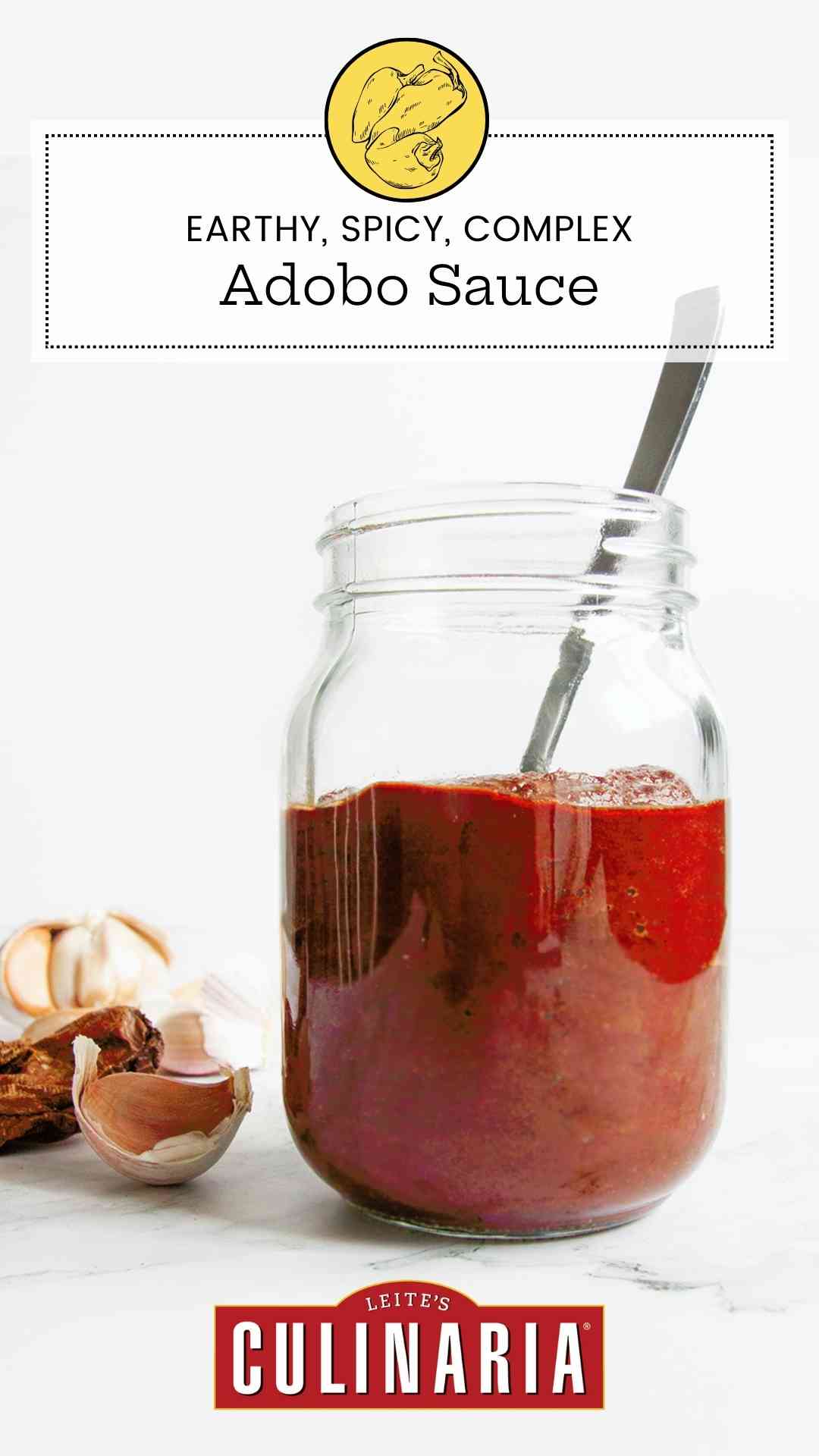
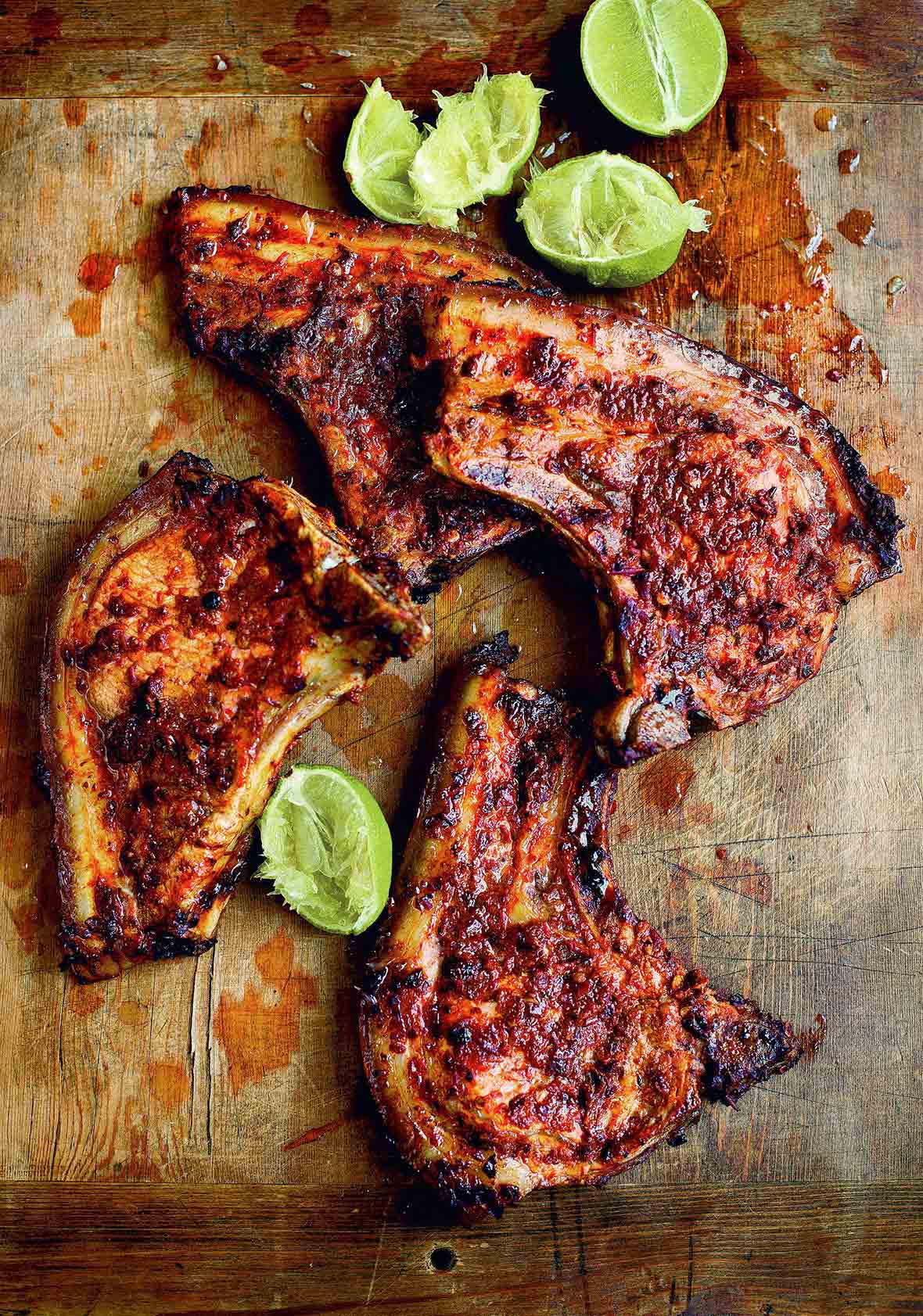












This recipe is totally wrong! The amount of water is way to much; that has to be a typo, you meant 1/4 cup not 1 1/4 right?
Actually, Peter, that’s accurate. It’s the amount listed in the recipe as it appears in the original cookbook, and it’s how we tested it in several different home kitchens, and folks absolutely raved. I know it seems a lot, but it actually does work.
I only had a generic chili powder instead of ancho chili powder so I cut that in half. That meant the final product was more liquid than slurry but the taste is absolutely fantastic — salty and tangy and smoky.
Thanks, Ryan. So glad you enjoyed it.